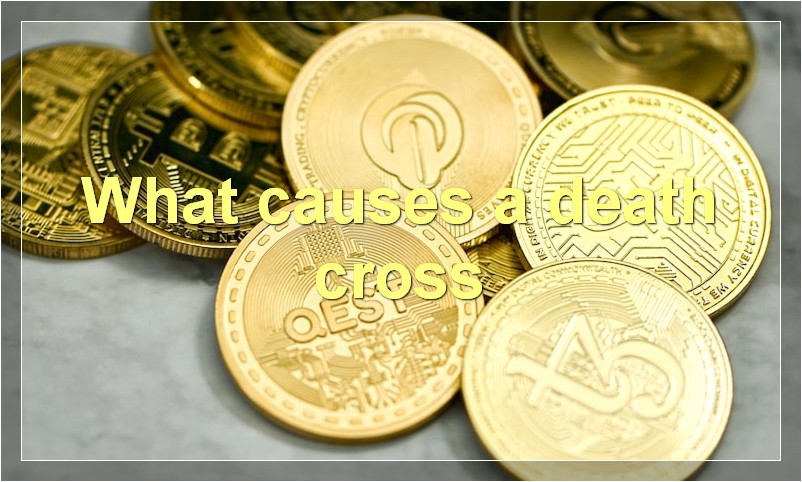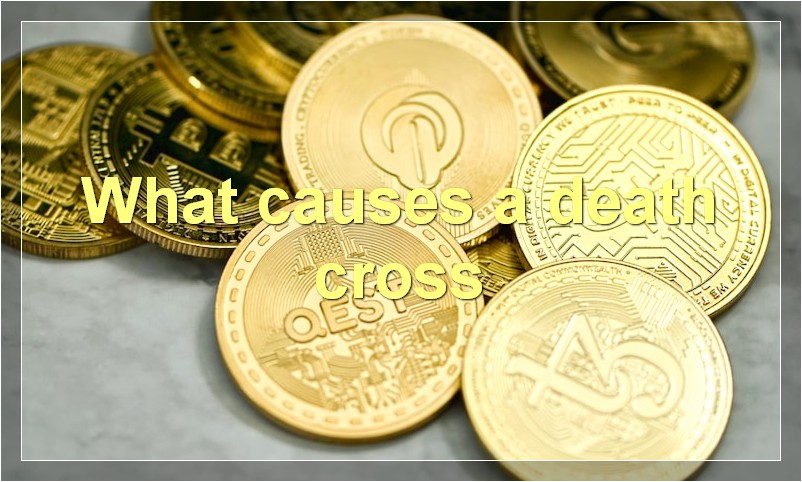A death cross is when a stock’s 50-day moving average crosses below its 200-day moving average.
What is a death cross
When it comes to investing, there are a lot of technical terms that can be confusing. One of these is the “death cross.” So, what is a death cross?
Simply put, a death cross is when the 50-day moving average crosses below the 200-day moving average. This is considered a bearish signal, as it indicates that the short-term trend is now down.
Investors who are bullish on a stock may start to sell when they see a death cross, as they fear that the stock will continue to fall. However, it’s important to remember that this is just one technical indicator and shouldn’t be used as the sole basis for an investment decision.
What causes a death cross

A death cross is a technical analysis indicator that is used to signal the potential for a bearish reversal in an asset’s price. It is created when a short-term moving average crosses below a longer-term moving average. This indicates that the asset’s price has begun to fall faster than its long-term average, which is often seen as a sign that the downtrend is gaining momentum.
There are a number of different factors that can cause a death cross to occur, but one of the most common is a change in market sentiment. When investors become bearish on an asset, they are more likely to sell it, even if it is only for a small profit. This can cause the asset’s price to fall sharply, which can trigger a death cross. Another common cause is a change in the underlying fundamentals of the asset. If an asset’s earnings or revenue start to decline, it can signal that the company is in trouble and that its stock price is likely to follow suit.
While a death cross can be a useful indicator for spotting potential reversals, it is important to remember that it is not always accurate. There have been occasions where a death cross has occurred but the asset’s price has continued to rise. This is why it is important to combine technical indicators with fundamental analysis when making investment decisions.
How can investors prepare for a death cross
When a death cross occurs, it signals that the market is about to enter a bearish phase. Investors can prepare for a death cross by Sell in May and go away strategy. This means that they should sell their stocks in May and then buy them back in November. This strategy has been proven to be successful in the past, and it can help investors avoid losses during a bearish market.
What is the long-term outlook after a death cross
In technical analysis, a death cross is a crossover of a stock’s moving average (MA) with a longer-term MA. The death cross indicates that the stock is in a long-term downtrend.
What are some recent examples of a death cross
A death cross is a technical analysis indicator that occurs when the 50-day moving average crosses below the 200-day moving average. This indicates that the short-term trend is bearish and could signal a longer-term sell-off.
Some recent examples of a death cross include:
-The S&P 500 index in December 2018
-The Dow Jones Industrial Average in June 2020
-The Nikkei 225 index in March 2020
-Bitcoin in March 2020
Is a death cross always bad news

When it comes to investing, there are a lot of different opinions out there. Some people swear by certain strategies, while others think they’re nothing but trouble. One of the most controversial topics is the death cross.
For those who don’t know, a death cross occurs when the 50-day moving average crosses below the 200-day moving average. This is generally seen as a bearish signal, as it indicates that the short-term trend is now weaker than the long-term trend.
However, this isn’t always the case. In some situations, a death cross can actually be a good thing. For example, if the market has been in a long-term uptrend and then experiences a sharp pullback, the death cross can signal that the pullback is over and that the uptrend is likely to resume.
Of course, there’s no sure way to know whether a death cross is going to be bullish or bearish. But if you keep an open mind and do your own analysis, you may be able to find some hidden gems in what others consider to be bad news.
What kind of impact does a death cross have on the stock market
Death crosses are a technical indicator that is used by some traders to predict when a stock is about to enter a bear market. While there is no definitive answer as to whether or not a death cross actually has an impact on the stock market, some believe that it can be a helpful tool in predicting market movements.
How long does a death cross typically last
A death cross typically lasts for around two weeks. This is when the market is in a downward trend and the price of a security drops below its 200-day moving average.
What happens to stocks after a death cross
A death cross is a technical indicator that occurs when the 50-day moving average crosses below the 200-day moving average. This signal is often seen as an indication that a stock is in a long-term downtrend.
When the 50-day moving average crosses below the 200-day moving average, it signals that the stock is in a long-term downtrend. This indicator is often used by traders to decide when to sell a stock.
Are there any benefits to a death cross
A death cross is when the 50-day moving average crosses below the 200-day moving average and is considered by many to be a bearish signal. However, there are some benefits to a death cross that investors should be aware of. One benefit is that it can help confirm other technical indicators. For example, if the death cross occurs with a breakout from a downtrend line or a negative divergence, it can add to the strength of the bearish signal. Another benefit is that it can help identify potential turning points in the market. A death cross that happens after a long period of decline may signal that the market has reached bottom and is ready to turn higher. Finally, a death cross can provide an early warning of a possible change in trend. While it’s not always accurate, it’s better to be safe than sorry when it comes to your investments.

